75 papers:
 ICSME-2015-GaoH #architecture #named #web
ICSME-2015-GaoH #architecture #named #web- ArchFLoc: Locating and explaining architectural features in running web applications (YG, DH), pp. 333–335.
 SAS-2015-Terauchi #effectiveness #heuristic #refinement #verification
SAS-2015-Terauchi #effectiveness #heuristic #refinement #verification- Explaining the Effectiveness of Small Refinement Heuristics in Program Verification with CEGAR (TT), pp. 128–144.
 ICEIS-v1-2015-FolinoGP #behaviour #modelling #on the #process
ICEIS-v1-2015-FolinoGP #behaviour #modelling #on the #process- On the Discovery of Explainable and Accurate Behavioral Models for Complex Lowly-structured Business Processes (FF, MG, LP), pp. 206–217.
 ICSE-v1-2015-PetrosyanRM #api #classification #information management #using
ICSE-v1-2015-PetrosyanRM #api #classification #information management #using- Discovering Information Explaining API Types Using Text Classification (GP, MPR, RDM), pp. 869–879.
 ICSE-v1-2015-YiYLZW #analysis #testing
ICSE-v1-2015-YiYLZW #analysis #testing- A Synergistic Analysis Method for Explaining Failed Regression Tests (QY, ZY, JL, CZ, CW), pp. 257–267.
 ICSE-v2-2015-Schwartz-Narbonne #c #named #source code
ICSE-v2-2015-Schwartz-Narbonne #c #named #source code- VERMEER: A Tool for Tracing and Explaining Faulty C Programs (DSN, CO, MS, TW), pp. 737–740.
 SIGMOD-2014-BenderKG #database #relational #security
SIGMOD-2014-BenderKG #database #relational #security- Explainable security for relational databases (GB, LK, JG), pp. 1411–1422.
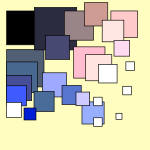 SCAM-2014-LozanoNJ #why
SCAM-2014-LozanoNJ #why- Explaining Why Methods Change Together (AL, CN, VJ), pp. 185–194.
 SIGIR-2014-ZhangL0ZLM #analysis #modelling #recommendation #sentiment
SIGIR-2014-ZhangL0ZLM #analysis #modelling #recommendation #sentiment- Explicit factor models for explainable recommendation based on phrase-level sentiment analysis (YZ, GL, MZ, YZ, YL, SM), pp. 83–92.
 MoDELS-2014-ChavarriagaNCJ #detection #multi #process
MoDELS-2014-ChavarriagaNCJ #detection #multi #process- Propagating Decisions to Detect and Explain Conflicts in a Multi-step Configuration Process (JC, CN, RC, VJ), pp. 337–352.
 MoDELS-2014-ChavarriagaNCJ #detection #multi #process
MoDELS-2014-ChavarriagaNCJ #detection #multi #process- Propagating Decisions to Detect and Explain Conflicts in a Multi-step Configuration Process (JC, CN, RC, VJ), pp. 337–352.
 PPDP-2014-CheneyAA #database #query
PPDP-2014-CheneyAA #database #query- Database Queries that Explain their Work (JC, AA, UAA), pp. 271–282.
 VLDB-2013-0002M #named #query
VLDB-2013-0002M #named #query- Scorpion: Explaining Away Outliers in Aggregate Queries (EW, SM), pp. 553–564.
 CSCW-2013-Velden #community #difference
CSCW-2013-Velden #community #difference- Explaining field differences in openness and sharing in scientific communities (TV), pp. 445–458.
 ICEIS-v1-2013-LiuDH #assessment #detection #exception #risk management
ICEIS-v1-2013-LiuDH #assessment #detection #exception #risk management- Detecting and Explaining Business Exceptions for Risk Assessment (LL, HAMD, WH), pp. 530–535.
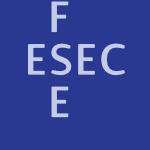 ESEC-FSE-2013-SchafSW #consistency
ESEC-FSE-2013-SchafSW #consistency- Explaining inconsistent code (MS, DSN, TW), pp. 521–531.
 ICSE-2013-SumnerZ #comparative #difference
ICSE-2013-SumnerZ #comparative #difference- Comparative causality: explaining the differences between executions (WNS, XZ), pp. 272–281.
 CAV-2013-DilligD #abduction #named
CAV-2013-DilligD #abduction #named- Explain: A Tool for Performing Abductive Inference (ID, TD), pp. 684–689.
 MSR-2012-ChenTNH #fault #modelling #topic #using
MSR-2012-ChenTNH #fault #modelling #topic #using- Explaining software defects using topic models (THC, SWT, MN, AEH), pp. 189–198.
 ICFP-2012-PereraACL #functional #source code
ICFP-2012-PereraACL #functional #source code- Functional programs that explain their work (RP, UAA, JC, PBL), pp. 365–376.
 CIKM-2012-BlancoCLPS #exclamation #recommendation #why
CIKM-2012-BlancoCLPS #exclamation #recommendation #why- You should read this! let me explain you why: explaining news recommendations to users (RB, DC, CL, RP, FS), pp. 1995–1999.
 ECIR-2012-HollinkHV #query
ECIR-2012-HollinkHV #query- Explaining Query Modifications — An Alternative Interpretation of Term Addition and Removal (VH, JH, APdV), pp. 1–12.
 KDD-2012-KohaviDFLWX #online
KDD-2012-KohaviDFLWX #online- Trustworthy online controlled experiments: five puzzling outcomes explained (RK, AD, BF, RL, TW, YX), pp. 786–794.
 KR-2012-CalvaneseOSS #complexity #query
KR-2012-CalvaneseOSS #complexity #query- The Complexity of Explaining Negative Query Answers in DL-Lite (DC, MO, MS, GS).
 SIGIR-2012-Cleger-TamayoFH #recommendation
SIGIR-2012-Cleger-TamayoFH #recommendation- Explaining neighborhood-based recommendations (SCT, JMFL, JFH), pp. 1063–1064.
 RE-2012-Chernak #composition #requirements
RE-2012-Chernak #composition #requirements- Requirements Composition Table explained (YC), pp. 273–278.
 ASE-2011-ZhangZE #automation #documentation #testing
ASE-2011-ZhangZE #automation #documentation #testing- Automated documentation inference to explain failed tests (SZ, CZ, MDE), pp. 63–72.
 VLDB-2012-FangSYB11 #named
VLDB-2012-FangSYB11 #named- REX: Explaining Relationships between Entity Pairs (LF, ADS, CY, PB), pp. 241–252.
 MSR-2011-HirataM
MSR-2011-HirataM- Do comments explain codes adequately?: investigation by text filtering (YH, OM), pp. 242–245.
 HIMI-v1-2011-GarbharranT #modelling #social
HIMI-v1-2011-GarbharranT #modelling #social- Modelling Social Cognitive Theory to Explain Software Piracy Intention (AG, AT), pp. 301–310.
 VMCAI-2011-LahiriV #named
VMCAI-2011-LahiriV #named- ExplainHoudini: Making Houdini Inference Transparent (SKL, JV), pp. 309–323.
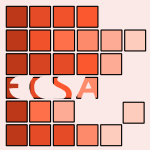 ECSA-2010-BerniniT #architecture
ECSA-2010-BerniniT #architecture- Explaining Architectural Choices to Non-architects (DB, FT), pp. 352–359.
 VLDB-2010-HerschelH #query
VLDB-2010-HerschelH #query- Explaining Missing Answers to SPJUA Queries (MH, MAH), pp. 185–196.
 ITiCSE-2010-Crescenzi #using
ITiCSE-2010-Crescenzi #using- Using AVs to explain NP-completeness (PC), p. 299.
 CIKM-2010-FlorezD #mining #process
CIKM-2010-FlorezD #mining #process- Mining rules to explain activities in videos (OUF, CED), pp. 1577–1580.
 REFSQ-2010-GleichCK #ambiguity #detection #towards
REFSQ-2010-GleichCK #ambiguity #detection #towards- Ambiguity Detection: Towards a Tool Explaining Ambiguity Sources (BG, OC, LK), pp. 218–232.
 HPCA-2010-BiswasRMACJPPS #metric #using
HPCA-2010-BiswasRMACJPPS #metric #using- Explaining cache SER anomaly using DUE AVF measurement (AB, CR, SSM, VA, LC, AJ, AEP, MP, NS), pp. 1–12.
 ITiCSE-2009-ListerFT #programming
ITiCSE-2009-ListerFT #programming- Further evidence of a relationship between explaining, tracing and writing skills in introductory programming (RL, CJF, DT), pp. 161–165.
 RecSys-2009-SymeonidisNM #named #recommendation
RecSys-2009-SymeonidisNM #named #recommendation- MoviExplain: a recommender system with explanations (PS, AN, YM), pp. 317–320.
 CAV-2009-BeerBCOT #using
CAV-2009-BeerBCOT #using- Explaining Counterexamples Using Causality (IB, SBD, HC, AO, RJT), pp. 94–108.
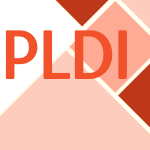 PLDI-2008-DincklageD #analysis
PLDI-2008-DincklageD #analysis- Explaining failures of program analyses (DvD, AD), pp. 260–269.
 ICEIS-AIDSS-2008-SchmidtV #reasoning #using
ICEIS-AIDSS-2008-SchmidtV #reasoning #using- Using Case-Based Reasoning to Explain Exceptional Cases (RS, OV), pp. 119–124.
 SEKE-2008-DuZR #concept analysis #release planning #using
SEKE-2008-DuZR #concept analysis #release planning #using- Explaining Product Release Planning Results Using Concept Analysis (GD, TZ, GR), pp. 137–142.
 ICDAR-2007-BrinkSB #identification #towards #using #verification
ICDAR-2007-BrinkSB #identification #towards #using #verification- Towards Explainable Writer Verification and Identification Using Vantage Writers (AB, LS, MB), pp. 824–828.
 ICEIS-DISI-2007-BoppKHPL #convergence #generative #self
ICEIS-DISI-2007-BoppKHPL #convergence #generative #self- Knowledge-mashups as next generation webbased systems — converging systems via self-explaining services (TB, BK, TH, CP, FL), pp. 307–314.
 ICEIS-EIS-2007-GeH #quality
ICEIS-EIS-2007-GeH #quality- A Theoretical Model to Explain Effects of Information Quality Awareness on Decision Making (MG, MH), pp. 164–169.
 RE-2007-Fricker #network #social #using
RE-2007-Fricker #network #social #using- Explaining Stakeholder Negotiation Using Social Goal Networks (SF), pp. 387–388.
 REFSQ-2007-AurumW #approach #concept #requirements
REFSQ-2007-AurumW #approach #concept #requirements- A Value-Based Approach in Requirements Engineering: Explaining Some of the Fundamental Concepts (AA, CW), pp. 109–115.
 SCAM-2006-BinkleyHK #animation #approximate #static analysis
SCAM-2006-BinkleyHK #animation #approximate #static analysis- Characterising, Explaining, and Exploiting the Approximate Nature of Static Analysis through Animation (DB, MH, JK), pp. 43–52.
 SEKE-2006-PinheiroFSM #development #knowledge-based #named #web
SEKE-2006-PinheiroFSM #development #knowledge-based #named #web- WebExplain: A UPML Extension to Support the Development of Explanations on the Web for Knowledge-Based Systems (VP, VF, PPdS, DLM), pp. 550–555.
 DAC-2005-ChangD #perspective
DAC-2005-ChangD #perspective- Explaining the gap between ASIC and custom power: a custom perspective (AC, WJD), pp. 281–284.
 IFL-2004-Gast #data flow #fault #ml
IFL-2004-Gast #data flow #fault #ml- Explaining ML Type Errors by Data Flows (HG), pp. 72–89.
 ICEIS-v5-2004-AvisonW #information management #lens #web
ICEIS-v5-2004-AvisonW #information management #lens #web- Information Systems Failure Explained through the Lens of the Cultural Web (DEA, DWW), pp. 203–210.
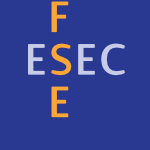 FSE-2004-ChakiGS
FSE-2004-ChakiGS- Explaining abstract counterexamples (SC, AG, OS), pp. 73–82.
 FSE-2004-ManevichSA #named #static analysis
FSE-2004-ManevichSA #named #static analysis- PSE: explaining program failures via postmortem static analysis (RM, MS, SA, MD, ZY), pp. 63–72.
 CAV-2004-GroceKL #comprehension
CAV-2004-GroceKL #comprehension- Understanding Counterexamples with explain (AG, DK, FL), pp. 453–456.
 CSCW-2002-VertegaalD #question
CSCW-2002-VertegaalD #question- Explaining effects of eye gaze on mediated group conversations: : amount or synchronization? (RV, YD), pp. 41–48.
 ITiCSE-2001-Fone #concept #network #spreadsheet #using
ITiCSE-2001-Fone #concept #network #spreadsheet #using- Using a familiar package to demonstrate a difficult concept: using an excel spreadsheet model to explain the concepts of neural networks to undergraduates (WF), pp. 165–168.
 IJCAR-2001-Fiedler #interactive #proving
IJCAR-2001-Fiedler #interactive #proving- P.rex: An Interactive Proof Explainer (AF), pp. 416–420.
 CSCW-2000-HerlockerKR #collaboration #recommendation
CSCW-2000-HerlockerKR #collaboration #recommendation- Explaining collaborative filtering recommendations (JLH, JAK, JR), pp. 241–250.
 VLDB-1999-Sarawagi #difference #multi
VLDB-1999-Sarawagi #difference #multi- Explaining Differences in Multidimensional Aggregates (SS), pp. 42–53.
 PPDP-1999-NeumerkelM #logic programming #source code
PPDP-1999-NeumerkelM #logic programming #source code- Localizing and Explaining Reasons for Non-terminating Logic Programs with Failure-Slices (UN, FM), pp. 328–342.
 ICSE-1999-BriandEW #cost analysis
ICSE-1999-BriandEW #cost analysis- Explaining the Cost of European Space and Military Projects (LCB, KEE, IW), pp. 303–312.
 ASE-1998-BaalenRLP
ASE-1998-BaalenRLP- Explaining Synthesized Software (JVB, PR, MRL, TP), pp. 240–248.
 KR-1998-McIlraith
KR-1998-McIlraith- Explanatory Diagnosis: Conjecturing Actions to Explain Observations (SAM), pp. 167–179.
 FPLE-1995-Fokker #algebra #functional #source code
FPLE-1995-Fokker #algebra #functional #source code- Explaining Algebraic Theory with Functional Programs (JF), pp. 139–158.
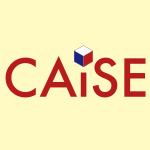 CAiSE-1995-OliveS #behaviour #concept #modelling
CAiSE-1995-OliveS #behaviour #concept #modelling- A Method for Explaining the Behaviour of Conceptual Models (AO, MRS), pp. 12–25.
 ICML-1994-Maza #architecture
ICML-1994-Maza #architecture- The Generate, Test, and Explain Discovery System Architecture (MdlM), pp. 46–52.
 ICRE-1994-GullaWLS #concept #modelling
ICRE-1994-GullaWLS #concept #modelling- Executing, viewing and explaining conceptual models (JAG, GW, OIL, AS), pp. 166–175.
 INTERCHI-1993-Redmiles #performance #variability
INTERCHI-1993-Redmiles #performance #variability- Reducing the variability of programmers’ performance through explained examples (DFR), pp. 67–73.
 ICML-1993-ORorkeFE
ICML-1993-ORorkeFE- Explaining and Generalizing Diagnostic Decisions (PO, YEF, ME), pp. 228–235.
 KR-1991-WellmanH
KR-1991-WellmanH- Qualitative Intercausal Relations, or Explaining “Explaining Away” (MPW, MH), pp. 535–546.
 ICLP-1991-CasanovaHG
ICLP-1991-CasanovaHG- Explaining SLDNF Resolution with Non-Normal Defaults (MAC, ASH, RAdTG), pp. 18–31.
 CAV-1990-Cleaveland #automation #bisimulation #on the
CAV-1990-Cleaveland #automation #bisimulation #on the- On Automatically Explaining Bisimulation Inequivalence (RC), pp. 364–372.
 ML-1989-MooneyO #aspect-oriented #concept #induction #learning
ML-1989-MooneyO #aspect-oriented #concept #induction #learning- Induction Over the Unexplained: Integrated Learning of Concepts with Both Explainable and Conventional Aspects (RJM, DO), pp. 5–7.
 ICSME-2015-GaoH #architecture #named #web
ICSME-2015-GaoH #architecture #named #web SAS-2015-Terauchi #effectiveness #heuristic #refinement #verification
SAS-2015-Terauchi #effectiveness #heuristic #refinement #verification ICEIS-v1-2015-FolinoGP #behaviour #modelling #on the #process
ICEIS-v1-2015-FolinoGP #behaviour #modelling #on the #process ICSE-v1-2015-PetrosyanRM #api #classification #information management #using
ICSE-v1-2015-PetrosyanRM #api #classification #information management #using ICSE-v1-2015-YiYLZW #analysis #testing
ICSE-v1-2015-YiYLZW #analysis #testing ICSE-v2-2015-Schwartz-Narbonne #c #named #source code
ICSE-v2-2015-Schwartz-Narbonne #c #named #source code SIGMOD-2014-BenderKG #database #relational #security
SIGMOD-2014-BenderKG #database #relational #security SCAM-2014-LozanoNJ #why
SCAM-2014-LozanoNJ #why SIGIR-2014-ZhangL0ZLM #analysis #modelling #recommendation #sentiment
SIGIR-2014-ZhangL0ZLM #analysis #modelling #recommendation #sentiment MoDELS-2014-ChavarriagaNCJ #detection #multi #process
MoDELS-2014-ChavarriagaNCJ #detection #multi #process MoDELS-2014-ChavarriagaNCJ #detection #multi #process
MoDELS-2014-ChavarriagaNCJ #detection #multi #process PPDP-2014-CheneyAA #database #query
PPDP-2014-CheneyAA #database #query VLDB-2013-0002M #named #query
VLDB-2013-0002M #named #query CSCW-2013-Velden #community #difference
CSCW-2013-Velden #community #difference ICEIS-v1-2013-LiuDH #assessment #detection #exception #risk management
ICEIS-v1-2013-LiuDH #assessment #detection #exception #risk management ESEC-FSE-2013-SchafSW #consistency
ESEC-FSE-2013-SchafSW #consistency ICSE-2013-SumnerZ #comparative #difference
ICSE-2013-SumnerZ #comparative #difference CAV-2013-DilligD #abduction #named
CAV-2013-DilligD #abduction #named MSR-2012-ChenTNH #fault #modelling #topic #using
MSR-2012-ChenTNH #fault #modelling #topic #using ICFP-2012-PereraACL #functional #source code
ICFP-2012-PereraACL #functional #source code CIKM-2012-BlancoCLPS #exclamation #recommendation #why
CIKM-2012-BlancoCLPS #exclamation #recommendation #why ECIR-2012-HollinkHV #query
ECIR-2012-HollinkHV #query KDD-2012-KohaviDFLWX #online
KDD-2012-KohaviDFLWX #online KR-2012-CalvaneseOSS #complexity #query
KR-2012-CalvaneseOSS #complexity #query SIGIR-2012-Cleger-TamayoFH #recommendation
SIGIR-2012-Cleger-TamayoFH #recommendation RE-2012-Chernak #composition #requirements
RE-2012-Chernak #composition #requirements ASE-2011-ZhangZE #automation #documentation #testing
ASE-2011-ZhangZE #automation #documentation #testing VLDB-2012-FangSYB11 #named
VLDB-2012-FangSYB11 #named MSR-2011-HirataM
MSR-2011-HirataM HIMI-v1-2011-GarbharranT #modelling #social
HIMI-v1-2011-GarbharranT #modelling #social VMCAI-2011-LahiriV #named
VMCAI-2011-LahiriV #named ECSA-2010-BerniniT #architecture
ECSA-2010-BerniniT #architecture VLDB-2010-HerschelH #query
VLDB-2010-HerschelH #query ITiCSE-2010-Crescenzi #using
ITiCSE-2010-Crescenzi #using CIKM-2010-FlorezD #mining #process
CIKM-2010-FlorezD #mining #process REFSQ-2010-GleichCK #ambiguity #detection #towards
REFSQ-2010-GleichCK #ambiguity #detection #towards HPCA-2010-BiswasRMACJPPS #metric #using
HPCA-2010-BiswasRMACJPPS #metric #using ITiCSE-2009-ListerFT #programming
ITiCSE-2009-ListerFT #programming RecSys-2009-SymeonidisNM #named #recommendation
RecSys-2009-SymeonidisNM #named #recommendation CAV-2009-BeerBCOT #using
CAV-2009-BeerBCOT #using PLDI-2008-DincklageD #analysis
PLDI-2008-DincklageD #analysis ICEIS-AIDSS-2008-SchmidtV #reasoning #using
ICEIS-AIDSS-2008-SchmidtV #reasoning #using SEKE-2008-DuZR #concept analysis #release planning #using
SEKE-2008-DuZR #concept analysis #release planning #using ICDAR-2007-BrinkSB #identification #towards #using #verification
ICDAR-2007-BrinkSB #identification #towards #using #verification ICEIS-DISI-2007-BoppKHPL #convergence #generative #self
ICEIS-DISI-2007-BoppKHPL #convergence #generative #self ICEIS-EIS-2007-GeH #quality
ICEIS-EIS-2007-GeH #quality RE-2007-Fricker #network #social #using
RE-2007-Fricker #network #social #using REFSQ-2007-AurumW #approach #concept #requirements
REFSQ-2007-AurumW #approach #concept #requirements SCAM-2006-BinkleyHK #animation #approximate #static analysis
SCAM-2006-BinkleyHK #animation #approximate #static analysis SEKE-2006-PinheiroFSM #development #knowledge-based #named #web
SEKE-2006-PinheiroFSM #development #knowledge-based #named #web DAC-2005-ChangD #perspective
DAC-2005-ChangD #perspective IFL-2004-Gast #data flow #fault #ml
IFL-2004-Gast #data flow #fault #ml ICEIS-v5-2004-AvisonW #information management #lens #web
ICEIS-v5-2004-AvisonW #information management #lens #web FSE-2004-ChakiGS
FSE-2004-ChakiGS FSE-2004-ManevichSA #named #static analysis
FSE-2004-ManevichSA #named #static analysis CAV-2004-GroceKL #comprehension
CAV-2004-GroceKL #comprehension CSCW-2002-VertegaalD #question
CSCW-2002-VertegaalD #question ITiCSE-2001-Fone #concept #network #spreadsheet #using
ITiCSE-2001-Fone #concept #network #spreadsheet #using IJCAR-2001-Fiedler #interactive #proving
IJCAR-2001-Fiedler #interactive #proving CSCW-2000-HerlockerKR #collaboration #recommendation
CSCW-2000-HerlockerKR #collaboration #recommendation VLDB-1999-Sarawagi #difference #multi
VLDB-1999-Sarawagi #difference #multi PPDP-1999-NeumerkelM #logic programming #source code
PPDP-1999-NeumerkelM #logic programming #source code ICSE-1999-BriandEW #cost analysis
ICSE-1999-BriandEW #cost analysis ASE-1998-BaalenRLP
ASE-1998-BaalenRLP KR-1998-McIlraith
KR-1998-McIlraith FPLE-1995-Fokker #algebra #functional #source code
FPLE-1995-Fokker #algebra #functional #source code CAiSE-1995-OliveS #behaviour #concept #modelling
CAiSE-1995-OliveS #behaviour #concept #modelling ICML-1994-Maza #architecture
ICML-1994-Maza #architecture ICRE-1994-GullaWLS #concept #modelling
ICRE-1994-GullaWLS #concept #modelling INTERCHI-1993-Redmiles #performance #variability
INTERCHI-1993-Redmiles #performance #variability ICML-1993-ORorkeFE
ICML-1993-ORorkeFE KR-1991-WellmanH
KR-1991-WellmanH ICLP-1991-CasanovaHG
ICLP-1991-CasanovaHG CAV-1990-Cleaveland #automation #bisimulation #on the
CAV-1990-Cleaveland #automation #bisimulation #on the ML-1989-MooneyO #aspect-oriented #concept #induction #learning
ML-1989-MooneyO #aspect-oriented #concept #induction #learning









